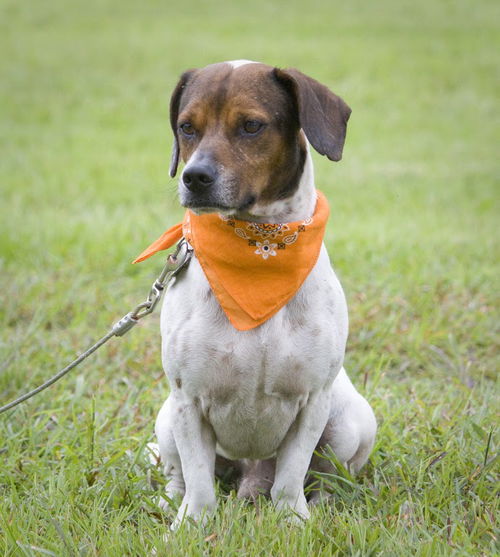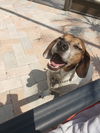
| My Rescue |
| Login to Remember your Favorite Animals and Breeds! |
~~9/1/15
These to lovebugs couldn't be sweeter. They are such good boys! Nash is more the attention hog of the two. He loves to cuddle, snuggle and play. Tobie is his mellow best buddy. Happy just to hang back, chill out, and enjoy the day.
Both dogs were excellent on their leashes. They didn't pull at all. They were very well behaved at the cafe for lunch time. Content to sit by our sides through a long leisurely lunch while we ate and enjoyed coffee. They are very low stress pups, and so cute! They had multiple admirers while we were out and about.
They want to be adopted together as they are inseparable bffs. While walking they pause and wait for the other to catch up and they love to give each other kisses which is adorable. If someone has room in their lives for these two pups they won't be sorry they are just so lovable and terrific. Tobie was pull from a high kill shelter. He is a sweet dog and we will be evaluating him and update his journal.... He is good with other dogs and very mellow. We can cat test him if you needed us to. As we have been observing we noticed that Tobi and Nash are very much bonded, they sleep together, eat together, play together and we decided we would like for them both to be adopted together. So please come by and watch how beautiful these two babies are together and we are sure you will agree.
According to www.dogbreedinfo.com, the name Basset Hound comes from the French word "bas" meaning low. Some sources suggest the Basset Hound may have originated from genetic dwarf dogs presented in litters of other types of French hunting hounds, however, we do know that it is a rather old breed, descended directly from the Bloodhound. Shakespeare described the Basset Hound with the following poetic image: "Ears which sweep away the morning due." According to research, the true fame of the Basset Hound began in 1863, when it was presented at the Paris Dog Show. Its popularity spread to England where a lively dispute arose between two factions of breeders: Those who wanted to keep the Basset Hound a hunting dog, and those who wanted to transform it into a companion dog. Situated between these two factions were the American breeders who proceeded to develop an extremely pleasing companion dog without sacrificing any of the qualities of the hunter. The breed was recognized by the American Kennel Club in 1885. Its natural bent is for hunting both in the den and in the open. It is therefore, used for the hunting of fox, hare, opossum, and pheasant. Bassets can hunt in packs or alone. It has an excellent sense of smell, but its reflexes are a bit slow. Their slow pace is convenient for hunters on foot and keeps game from being scared out of reach. The Basset's nose is almost as outstanding as the Bloodhound's. George Washington may have owned Basset Hounds given to him by Lafayette after the American Revolution. The Basset Hound is sweet, gentle, devoted, peaceful and naturally well-behaved. They fit into family life well. Their temperament should always be friendly with never an indication of sharpness or viciousness. They are mild but not timid; very affectionate with its master and friendly with children. It is incapable of biting, but it may be a bit stubborn. They like to do tricks for food. It has a deep musical bark. Housebreaking is difficult, but they do well with gentle patient training and positive reinforcement. With proper training, they are obedient, but when they pick up an interesting smell, it's sometimes hard to get their attention. They have a life expectancy of 10-12 years.
Other Pictures of Tobie (click to see larger version):
 4963.6k |
 111.9k |
 185.9k |
 135.8k |
 53.7k |
Copyright © Pet Rescue by Judy





